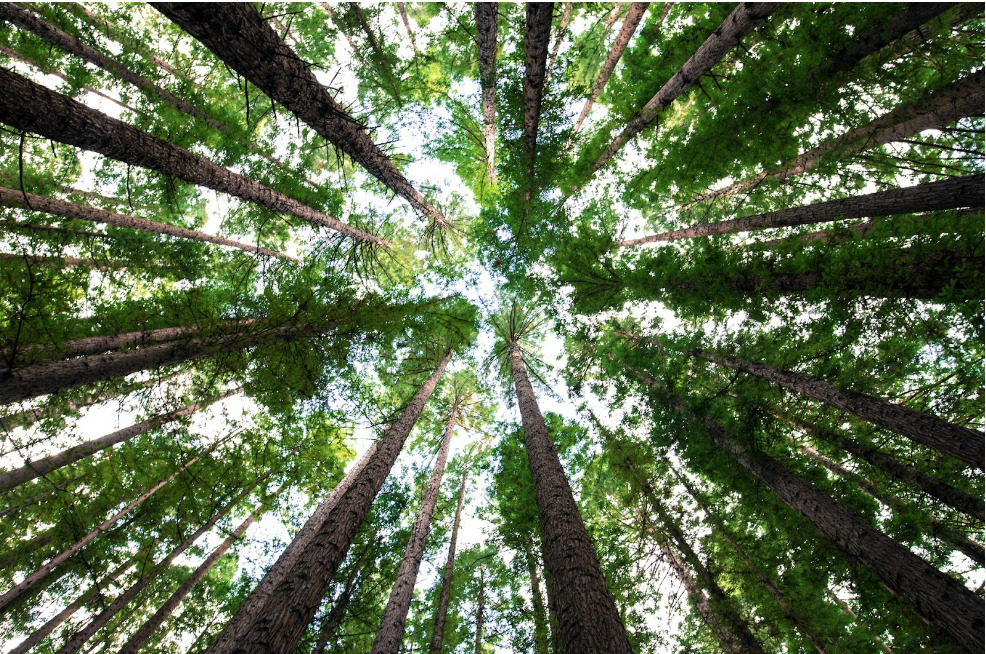Trees are more than just beautiful additions to your yard; they are essential components of its ecosystem. Their significance goes far beyond their aesthetic appeal.
Read on as we explore the many benefits and important roles that trees play in our lives, inspiring you to appreciate and nurture these green giants right in your own backyard.
1. Environmental benefits
Trees are natural air filters. They counteract climate change by absorbing carbon dioxide, a significant greenhouse gas, and releasing oxygen through photosynthesis.
Additionally, they serve as natural filters, capturing dangerous pollutants and enhancing air quality. You may help your neighborhood’s ecosystem become healthier and cleaner by planting trees in your yard.
2. Ecological importance
Trees provide habitats and food for a variety of wildlife. Birds build nests in their branches, squirrels find shelter in tree hollows, and countless insects thrive in their bark. By planting native trees, you can attract and support diverse wildlife, contributing to the overall balance of your local ecosystem.
3. Energy efficiency
Strategically planting trees around your home can help regulate the temperature inside. During hot summers, trees provide shade, reducing the need for air conditioning. In winter, they act as windbreaks, reducing heat loss and lowering heating costs. By incorporating trees into your yard, you can save energy and reduce your carbon footprint.
4. Soil conservation
Soil erosion is significantly reduced by tree roots. They cling to the soil, reducing runoff and intense rainfall’s effects. Fallen branches and leaves also serve as a natural mulch, enhancing the soil and enhancing its health. You may produce healthier plants and flowers in your yard because trees help keep your yard fertile.
5. Mental health and well-being
The presence of trees has a positive impact on our mental health. Spending time in nature, surrounded by trees, has been linked to reduced stress, improved concentration, and enhanced overall well-being. Trees also provide privacy and tranquility, creating a peaceful sanctuary in your own backyard.
Tips for Choosing the Right Trees for Your Yard
The long-term health of your yard’s trees and the overall effect they will have on your landscape depend on what types of trees you plant.
There’s no doubt, there are a huge variety of tree can choose from. That’s why if you want to create a healthy, aesthetically beautiful environment, it’s important to understand the different factors that need to be considered.
Following are key considerations and insights that will help you to choose the best kinds of trees for your yard.
1. Climate
Consider the climate of your region before choosing trees for your yard. Different trees have specific temperature and moisture requirements. Native trees are often well-adapted to local conditions and tend to thrive with minimal care. Consult local nurseries, extension services, or gardening experts to identify trees that are suitable for your climate zone.
2. Space and size
Evaluate the available space in your yard and determine the size of trees that will best fit the area. Consider both the height and spread of the mature tree. Planting large trees in small spaces can lead to overcrowding and potential damage to structures or other plants. Smaller yards may benefit from dwarf or columnar tree varieties that offer vertical interest without overwhelming the space.
3. Purpose and function
Define the purpose you want the trees to serve in your yard. Are you seeking shade, privacy, ornamental beauty, or fruit production? Different trees fulfill different functions.
Shade trees like maples or oaks provide relief from the sun, while evergreens offer year-round privacy. Flowering trees such as dogwoods or magnolias add visual appeal, and fruit trees provide homegrown produce.
4. Maintenance
Consider the level of maintenance you are willing to invest in tree care. Some trees require regular pruning, while others are relatively low-maintenance. Research the specific needs of tree species regarding watering, fertilization, and disease resistance. Think about the time and resources you will have available to ensure you can provide the necessary care for your chosen trees.
5. Soil and sunlight conditions
Evaluate the soil quality and drainage in your yard. Different trees thrive in varying soil types, pH levels, and moisture conditions. Additionally, study the amount of sunlight the area receives throughout the day. Some trees require full sun exposure, while others prefer partial or full shade. Understanding these conditions will help you pick trees that are compatible with your yard’s environment.
6. Diversity and resilience
Strive for diversity in your tree selection to promote a healthy ecosystem. Planting a mix of tree species increases resilience against pests and diseases. Monocultures are more susceptible to widespread damage.
Additionally, consider the longevity and lifespan of the trees. Balance short-lived species with long-lived ones to maintain a continuous tree presence in your yard.
Trees are not merely static elements in our surroundings; they are living organisms that support life in numerous ways. By recognizing and embracing the importance of trees in our yards, we become caretakers of the environment and active contributors to the well-being of our communities.
So, let’s plant, nurture, and celebrate trees—the green guardians that enrich our lives and the world around us.
Patio Fruit Trees: How to Choose the Right One for You


